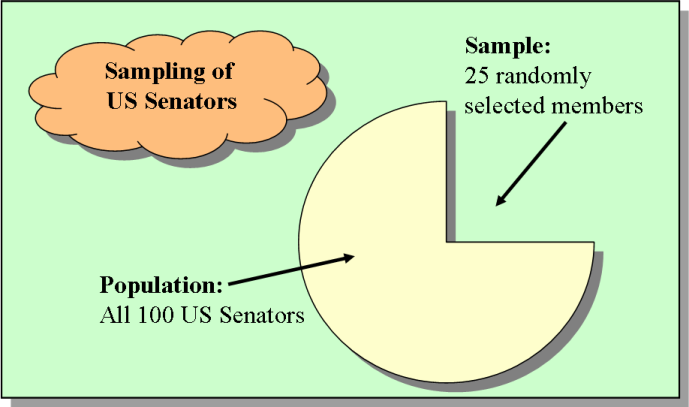Sampling and Population in Research
Sampling
Sampling and population are two important and often confused subjects in research. They can be defined as;
Population: Theoretically specified group of studied elements or the large group results are generalized to
Sample: Study participants, usually a smaller group or a subset of the population
Sampling: process of selective study participants
There are two types of sampling, probability and it’s opposite. Within there these general types, there are many different examples and kinds. A few of them are listed below.

Probability Sampling
- Every member of the population has a known & equal chance of being selected for the study
- Random selection is a key element
- Simple Random Sampling: Each member of population is assigned a number, then random drawing of numbers is done.
- Systematic Random Sampling: Every kB element is selected (i.e. every 4th name is chosen)
- Stratified Random Sampling:
- Group of participants are in layers / levels
- Break into groups, then randomly select from the groups
Non-Probability Sampling
- Not random
- Unequal chance of selection
Types of non-probability sampling methods include:
- Snowball Sampling
- Participants refer others to the study
- Works well with hidden populations
- Convenience or Available Participants
- Just choosing participants because the people are available
- Often if a survey in the middle of the pub
- Quota
- The non-random parallel to stratified sampling
- Characteristic qualifies for study (i.e. demographic, age…etc)
- Purposive Sampling
- Criteria or diagnostic category qualifies for participation (not random)
- For example, finding information on people who have been molested and their cases have been brought to court